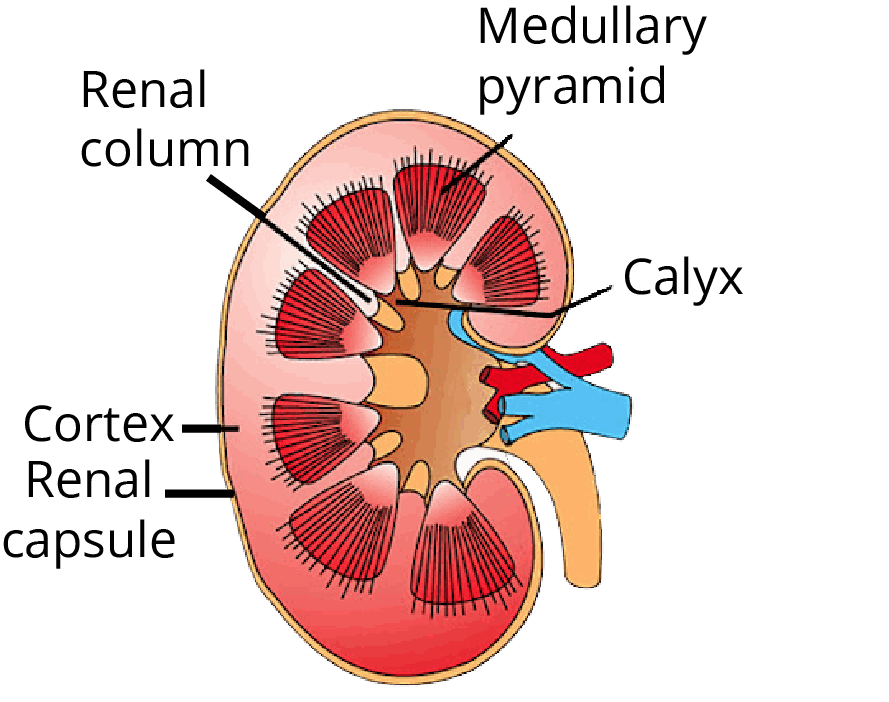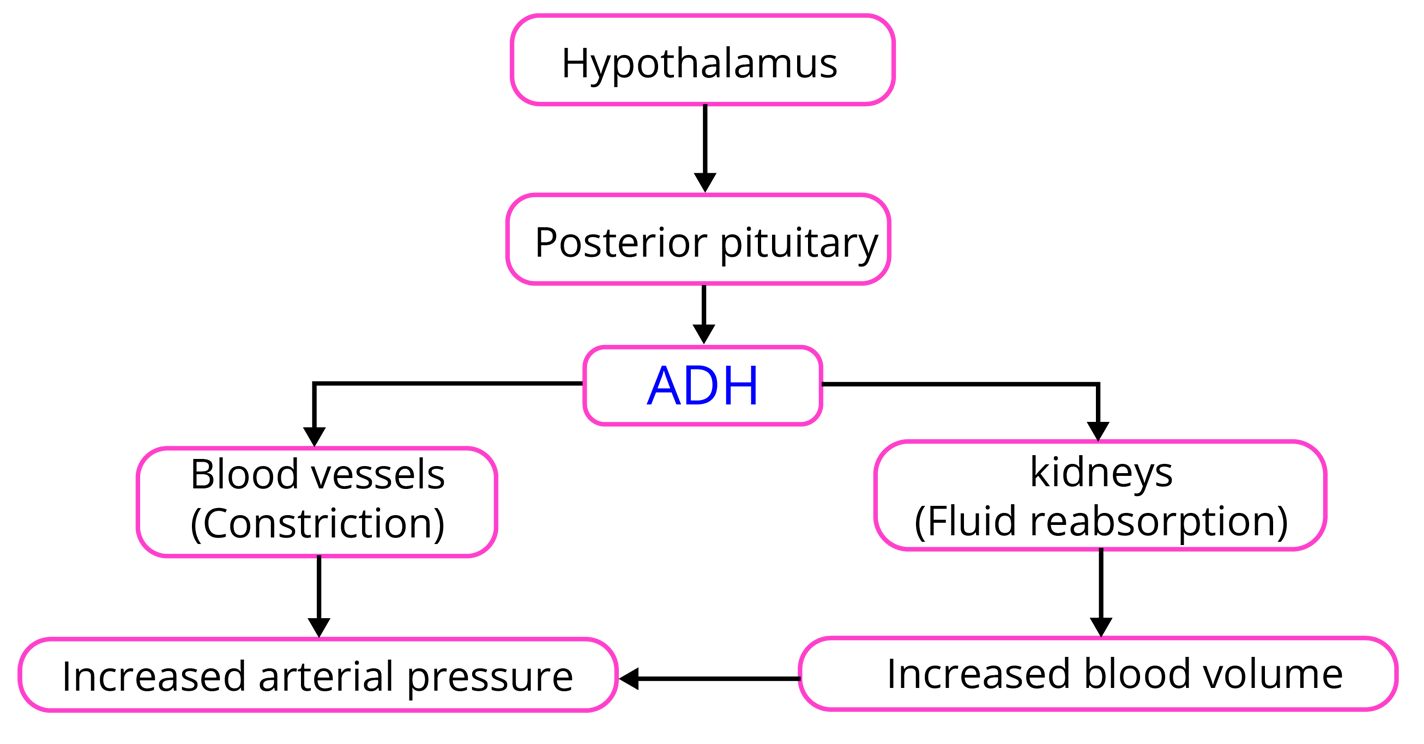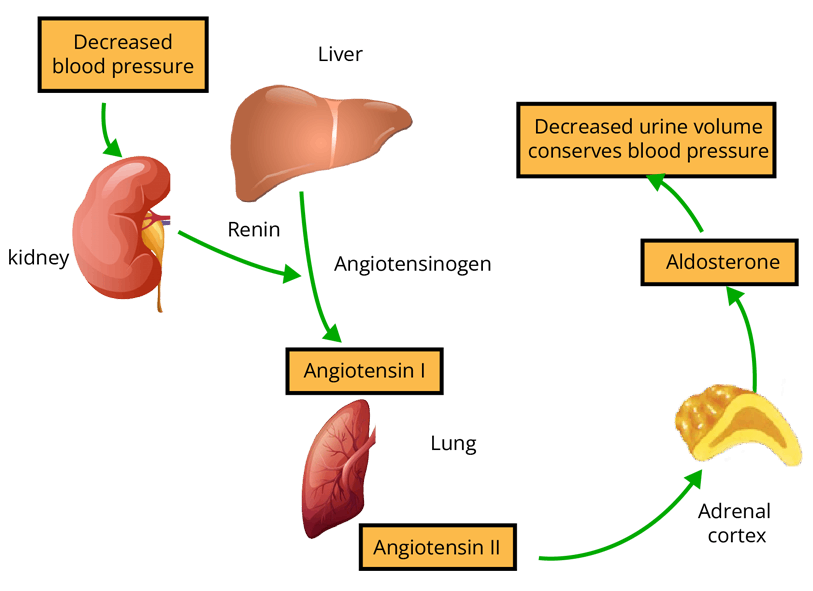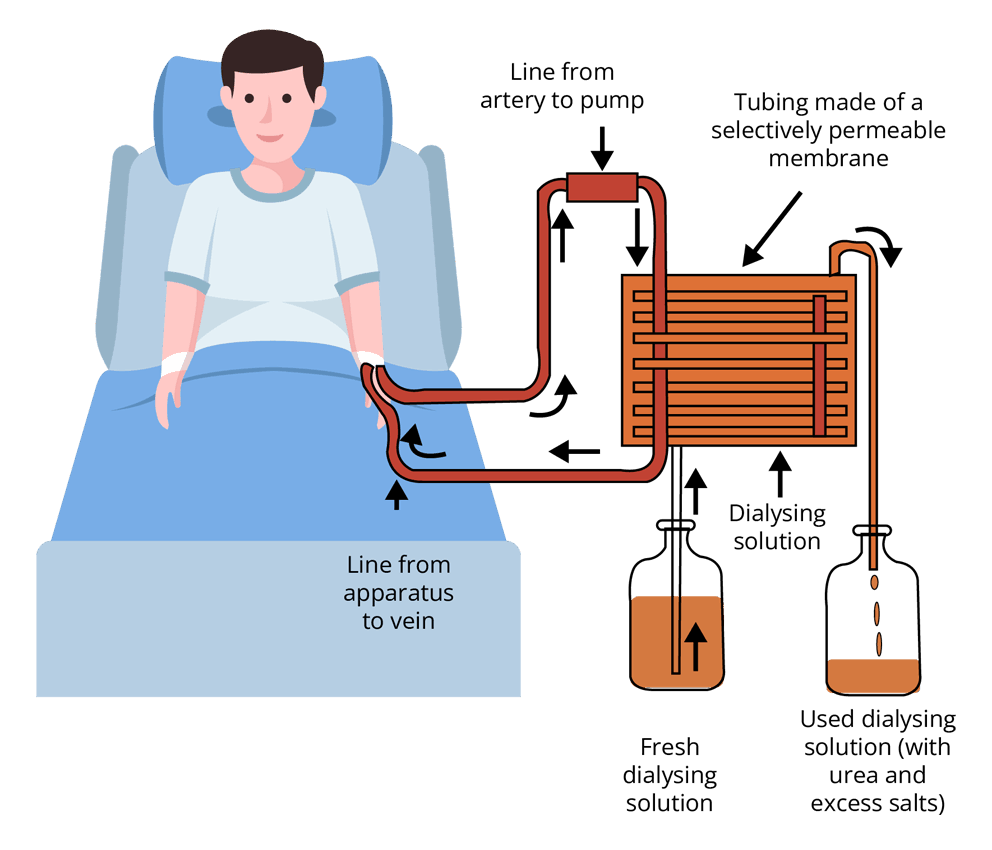




Excretory Products and Their Elimination
The following document contains important concepts, topics, and questions of the chapter named Excretory Products and Their Elimination as per the NEET syllabus for Biology. It will be helpful for students who are looking for a last-minute revision of the chapter.
The following document contains all important topics as well as provides an insight into the exam pattern. By going through this document, one can find the solutions to all the important questions related to the chapter such as what is excretion, what are the different excretory organs in different organisms, what is nephron and its detailed structure, what are the steps in urine formation, and what is the renin-angiotensin mechanism?
Important Topics of Excretory Products and Their Elimination
Human excretory system
Urine formation
Regulation of kidney functions
Disorders of the excretory system
Important Concepts
Excretion
The process which involves the removal of nitrogenous waste products out of the body is called excretion. The products of excretion vary depending on the habitat of the living organisms.
The following table describes the different types of excretory products among different organisms.
Organs of Excretion in Different Organisms
The following table describes the organs of excretion in different organisms.
Human Excretory System
It includes organs that facilitate the removal of nitrogenous wastes from the body. It consists of a pair of kidneys, one pair of ureters, a urinary bladder, and a urethra.
(Image will be uploaded soon)
Excretory System in Humans
Structure of Kidney
Kidneys are the bean-shaped organs that measure 10-12 cm in length, 5-7 cm in width, and 2-3 cm in thickness with an average weight of 120-170 g.
Towards the centre of the inner concave surface of the kidney is a notch termed as hilum through which the ureter, blood vessels, and nerves enter.
Inner to the hilum is a broad funnel-shaped space termed as renal pelvis with projections called calyces.
The outer covering of the kidney is a tough capsule. Inside the kidney, there are two zones, an outer one is called the cortex and an inner one is called the medulla. The medulla is divided into a few conical masses named as medullary pyramids projecting into the calyces.
The primary function of the kidney is osmoregulation. These are also responsible for the excretion of nitrogenous wastes products.

Structure of Nephron
Nephron is considered as the structural and functional unit of the kidney. There are approximately one million nephrons present in each kidney.
The components of nephron include the following:
Bowman’s capsule: It is the double-walled cup-like structure which encloses the glomerulus. The glomerulus is the tuft of capillaries formed by the afferent arterioles. It filters the small solutes particles from the blood. Bowman’s capsule along with the glomerulus forms the malpighian body or renal corpuscle.
Proximal convoluted tubule: It reabsorbs the ions such as water and nutrients. The amount of reabsorption is maximum in this particular region.
Loop of Henle: The descending portion of the loop of Henle plays an important role in the reabsorption of water from filtrate to the intestinal fluid and the ascending portion of it reabsorbs the sodium and chloride ions from filtrate to the intestinal fluid.
Distal convoluted tubule: It reabsorbs and secretes different ions in a selective manner and thus plays an important role in maintaining the ideal pH.
Collecting duct: It also plays the function of reabsorption of solutes and the water from the filtrate.
(Image will be uploaded soon)
Urine Formation
The process of urine formation is completed in three steps.
1. Glomerular filtration
It is the first step of urine formation.
It is carried out by the glomerulus. Approximately 1100-1200 ml of blood is filtered by the kidneys per minute.
It is the glomerular capillary blood pressure that causes the filtration of blood. The filtration of blood occurs through the three layers, i.e., the endothelium of glomerular blood vessels, the epithelium of Bowman’s capsule, and a basement membrane present between the endothelium and the epithelium.
The filtration of blood occurs so finely that almost all the components of the plasma except the proteins pass into the lumen of the Bowman’s capsule. So, this kind of filtration is considered as ultra filtration.
The amount of the filtrate formed by the kidneys per minute is termed as glomerular filtration rate (GFR). In a healthy individual, the value of the glomerular filtration rate is approximately 125 ml/minute.
2. Tubular Reabsorption
Approximately 99 % of the filtrate has to be reabsorbed by the renal tubules.
The process of reabsorption occurs in an active or passive manner, such as glucose, amino acids, and sodium ions are reabsorbed by the active transport. The reabsorption of nitrogenous wastes occurs through passive transport; the reabsorption of water occurs through passive transport (in the initial segments of the nephron).
3. Tubular Secretion
It is the third and the final stage of the urine formation.
In this step, the tubular cells secrete substances like hydrogen ions, potassium ions, and ammonia into the filtrate.
It is one of the important steps in the formation of urine because it is helpful in maintaining the ionic and acid-base balance of body fluids.
Regulation of Kidney Functions
The functioning of the kidney is regulated by the following.
1. ADH (Antidiuretic hormone)/Vasopressin
This hormone is released by the hypothalamus on activation of osmoreceptors in the body.
These receptors get activated in response to the excessive loss of fluid from the body due to the injury or the sweating.

2. JGA
Juxtaglomerular apparatus regulates the functioning of the kidney via a complex process named as Renin-Angiotensin mechanism.

3. Atrial Natriuretic Factor(ANF)
It is the peptide hormone that regulates the Renin-Angiotensin mechanism.
Disorders of the Excretory System
The table given below describes the disorders associated with the excretory system.
Hemodialysis
It is the process which involves the removal of urea from the blood by artificial means in patients in which the kidney does not work properly.

Solved Examples from the Chapter
1. Effective filtration pressure was calculated to be 20mm of Hg whereas glomerular hydrostatic pressure was 70 mm of Hg. Which other pressure is affecting the filtration process? How much is it?
Ans: The other filtration pressure that affects the filtration process are as follows:
BCOP (Blood colloidal osmotic pressure) - It is the osmotic pressure that is generated by the plasma proteins on the wall of the glomeruli. Its value is about 32 mm of Hg.
CHP (Capsular hydrostatic pressure) - During the filtration process, the pressure which is exerted against the filtration membrane by the filtrate inside the Bowman's capsule is called capsular hydrostatic filtration. Its value is about 18mm of Hg. Both these pressures oppose the glomerular filtration.
Key point to remember - NFP (Net filtration pressure) = GBHP- (BCOP+CHP)
2. How is the amount of urine produced in the body is regulated?
Ans: The amount of urine produced in the body depends upon various factors such as the amount of excess water and dissolved waste in the body, the habitat of the organism, etc.
ADH (antidiuretic hormone) is produced by the posterior pituitary. Its main function is to tell the kidney how much water is to conserve.
When the body is dehydrated, more amount of ADH will be produced that decreases the reabsorption of water and makes the urine more concentrated and vice versa will be there if the body is much hydrated.
Key point to remember - ADH makes the urine more concentrated.
Solved Problems of Previous Year Questions
1. Mark the incorrect statement
The JGA responds to an increase in the blood pressure or blood volume in the afferent arteriole of the glomerulus.
Renin converts angiotensinogen to a peptide angiotensin.
Angiotensin II increases blood pressure by causing arterioles to constrict.
The wall of atria releases ANF in response to an increase in blood volume and pressure and opposes RAAS.
Ans: The correct answer is “A”.
Juxtaglomerular apparatus is formed by the cellular modifications in the DCT and the
afferent arteriole at the location of their contact.
It responds to a decrease in blood pressure or blood volume in afferent arterioles of the glomerulus.
A fall in glomerular blood pressure activates the JG cells which produce renin which converts angiotensinogen into angiotensin I and then angiotensin II which acts as the powerful vasoconstrictor, thus increases the glomerular blood pressure and thereby GFR (glomerular filtration rate).
Angiotensin II also activates the adrenal cortex to release aldosterone which is responsible for the reabsorption of Na+ and water from the distal parts of the tubule which leads to an increase in blood pressure and the GFR (glomerular filtration rate).
This complex mechanism is generally known as the Renin-Angiotensin mechanism.
In this mechanism, ANF (Atrial Natriuretic Factor) works in a negative feed-back manner, thus causes vasodilation (dilation of blood vessels) and thereby decreases the blood pressure. It is a peptide hormone that is released by the atria of the heart.
Hence, statements b, c, and d are incorrect.
Trick to solve easily - One can use the elimination method to solve this kind of problem.
2. Ultrafiltration occurs in the glomerulus when
Osmotic pressure exceeds hydrostatic pressure.
Hydrostatic pressure exceeds osmotic pressure.
Colloidal osmotic pressure plus capsular pressure remain less than glomerular hydrostatic pressure.
Capsular hydrostatic pressure exceeds glomerular hydrostatic pressure.
Ans: The correct answer is “C”.
BCOP (Blood colloidal osmotic pressure) - It is the osmotic pressure that is generated by the plasma proteins on the wall of the glomeruli. Its value is about 32 mm of Hg.
CHP (Capsular hydrostatic pressure) - During the filtration process, the pressure which is exerted against the filtration membrane by the filtrate inside the Bowman's capsule is called capsular hydrostatic filtration. Its value is about 18mm of Hg.
Glomerular blood hydrostatic pressure (GBHP) - It is the pressure in the glomerulus that is generated due to the difference in the diameter of afferent and efferent arteriole. Its value is about 60mm of Hg. It is the main driving force that is responsible for filtration.
NFP (Net filtration pressure) = GBHP-(BCOP+CHP)
= 60-(32+18)mm of Hg
= 10mm of Hg.
Thus, a pressure of 10 mm of Hg causes the normal amount of the blood to filter through the glomerulus by ultrafiltration.
Trick to solve easily - NFP(Net filtration pressure)= GBHP-(BCOP+CHP)**. Use the formula and get the answer.
3. A large quantity of fluid is filtered everyday by the nephrons in the kidneys.
Only about 1% is excreted as urine. The remaining 99% of the filtrate
is stored in the urinary bladder.
is reabsorbed in the blood.
gets collected in the renal pelvis.
is lost as sweat.
Ans: The correct answer is “B”.
During a period of 24 hours, the renal tubules reabsorb approximately 99% of the filtrate into the blood, leaving just about 1.5 litres to be discharged as urine. The kidneys can control blood filtration precisely due to reabsorption. The filtrate contains wastes, excess salts, and other components, which are expelled out of the body in the urine.
Trick to solve easily - 99% reabsorption, 1% excretion.
Practice Questions
1. What is excretion? Describe the functions performed by the excretory system.
Ans: Excretion is the process which involves the removal of nitrogenous waste out of the body. The main organ that is involved in the process of excretion is the bean-shaped kidneys. The functions that are performed by the excretory system are as follows:
Detoxification of the body by the elimination of harmful nitrogenous wastes outside of the body.
Maintenance of water and ions balance in the body.
2. What is the function of Heparin in Haemodialysis?
Ans: Hemodialysis is the process which involves the removal of urea from the blood by artificial means in such patients in which the kidney does not work properly. Blood drained from a convenient artery is pumped into a dialysing unit after adding heparin, which acts as an anticoagulant, thus prevents blood clots information.
Conclusion
This article contains all the important information as per the requirement of students who are preparing for the NEET exam. It contains all the important concepts, solved examples, previous year questions, and practice problems that can be very helpful.
Make sure to try the practice question on your own to test your knowledge and to get desired outputs.
NEET Important Chapter - Excretory Products and Their Elimination

 Share
ShareFAQs on NEET Important Chapter - Excretory Products and Their Elimination
1. What is the weightage of chapter excretory products and their elimination in the Neet exam?
As per the chapter wise weightage for the NEET exam, nearly 2% of the total questions from the past eight years have been asked from this chapter only.
2. What are the important topics of the chapter Excretory Products and Their Elimination?
Although it is one of the most important chapters in terms of the NEET exam. Some of the important topics from which the questions are generally asked are mode and organs of excretion in different organisms, mechanism of urine formation, regulation of kidney function, hemodialysis, etc.
3. Is NCERT enough for preparing for the NEET exams?
Yes, NCERT is enough for preparing for the NEET exam. It is considered as the medical aspirant's bible because it covers each and every concept from which the questions are asked frequently. Students can clear their basics by going through it.








 Watch Video
Watch Video
